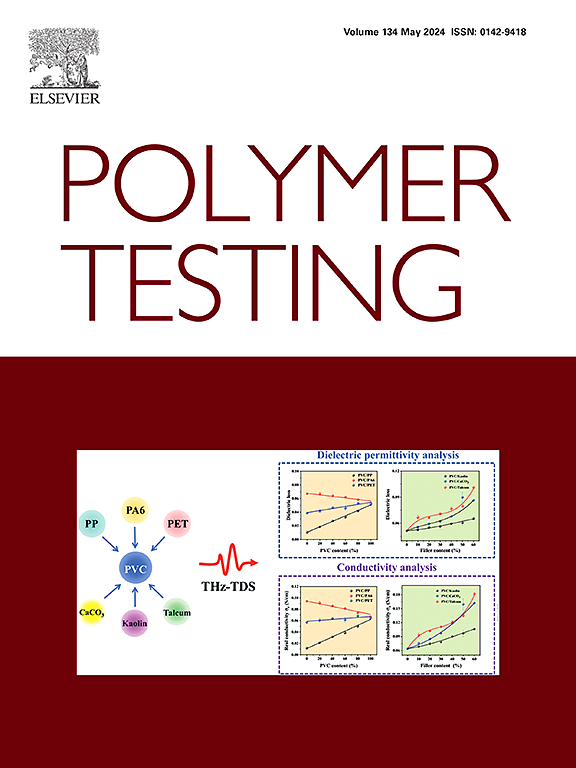Ultra-durable Janus fabric treated with femtosecond laser for personal anti-fouling and thermal management
IF 5
2区 材料科学
Q1 MATERIALS SCIENCE, CHARACTERIZATION & TESTING
引用次数: 0
Abstract
Janus fabrics with moisture and heat-management capabilities are capable of improving the physiological and psychological comfort of humans. However, the current manufacturing processes for Janus fabrics are complex, expensive, and environmentally unfriendly. Moreover, the poor durability of the produced fabrics prevents them from meeting the requirements of daily use and washing. In this study, Janus fabric was prepared by spraying hydrophobic SiO2 particles onto hydrophilic cotton fabrics, followed by femtosecond-laser scanning. The prepared Janus fabric exhibited an excellent unidirectional liquid transport capability and could unidirectionally transport sweat from a hydrophobic to hydrophilic surface. The superhydrophobic surface of the Janus fabric provided outstanding antifouling properties, effectively preventing the adhesion of dirt and bacteria. More importantly, the Janus fabric could withstand approximately 1000 abrasion cycles and 30 accelerated washing cycles, which was a significant indication that it would be capable of daily use. In addition, the Janus fabric provided a cooler feeling than a conventional cotton fabric (≈4.9 °C lower than when wearing cotton fabric), and had an excellent water evaporation rate and moisture permeability. This method provided new insights into the development of economical and environmentally friendly ultradurable Janus fabrics.
超耐用Janus织物处理与飞秒激光个人防污和热管理
Janus织物具有湿度和热量管理能力,能够改善人体的生理和心理舒适度。然而,目前Janus面料的制造工艺复杂、昂贵,而且对环境不友好。此外,生产的织物耐久性差,无法满足日常使用和洗涤的要求。在本研究中,通过在亲水性棉织物上喷涂疏水性SiO2颗粒,然后进行飞秒激光扫描制备Janus织物。制备的Janus织物具有优异的单向液体输送能力,可以将汗液从疏水表面单向输送到亲水表面。Janus面料的超疏水表面提供了出色的防污性能,有效防止污垢和细菌的粘附。更重要的是,Janus织物可以承受大约1000次磨损和30次加速洗涤,这是一个重要的迹象,表明它可以日常使用。此外,Janus面料提供了比传统棉织物更凉爽的感觉(比穿着棉织物低≈4.9°C),并且具有出色的水分蒸发率和透湿性。这种方法为开发经济环保的超耐用Janus织物提供了新的见解。
本文章由计算机程序翻译,如有差异,请以英文原文为准。
求助全文
约1分钟内获得全文
求助全文
来源期刊

Polymer Testing
工程技术-材料科学:表征与测试
CiteScore
10.70
自引率
5.90%
发文量
328
审稿时长
44 days
期刊介绍:
Polymer Testing focuses on the testing, analysis and characterization of polymer materials, including both synthetic and natural or biobased polymers. Novel testing methods and the testing of novel polymeric materials in bulk, solution and dispersion is covered. In addition, we welcome the submission of the testing of polymeric materials for a wide range of applications and industrial products as well as nanoscale characterization.
The scope includes but is not limited to the following main topics:
Novel testing methods and Chemical analysis
• mechanical, thermal, electrical, chemical, imaging, spectroscopy, scattering and rheology
Physical properties and behaviour of novel polymer systems
• nanoscale properties, morphology, transport properties
Degradation and recycling of polymeric materials when combined with novel testing or characterization methods
• degradation, biodegradation, ageing and fire retardancy
Modelling and Simulation work will be only considered when it is linked to new or previously published experimental results.
 求助内容:
求助内容: 应助结果提醒方式:
应助结果提醒方式:


